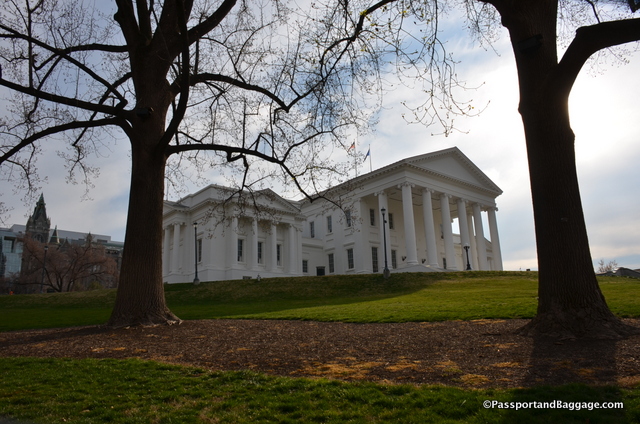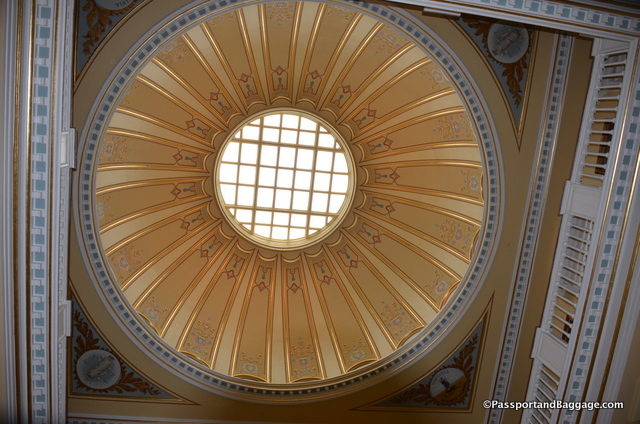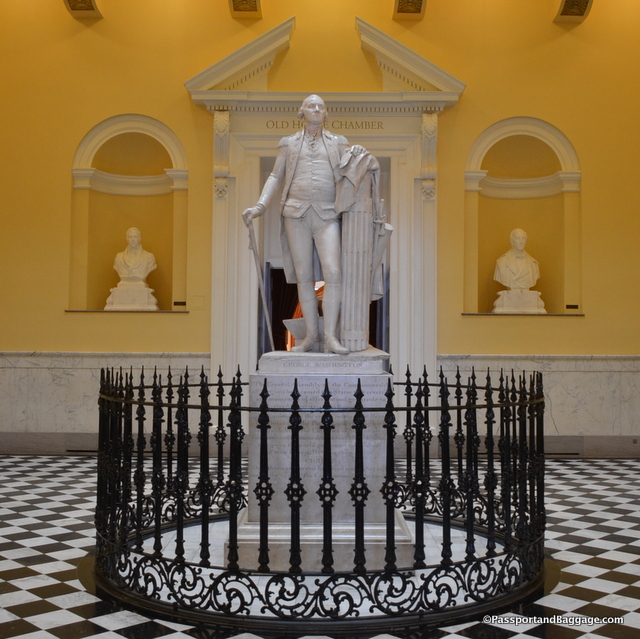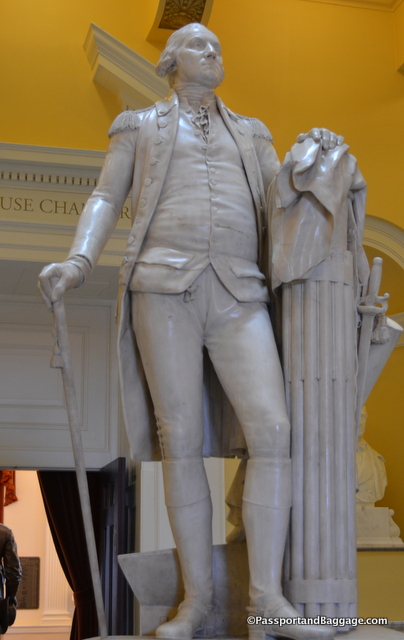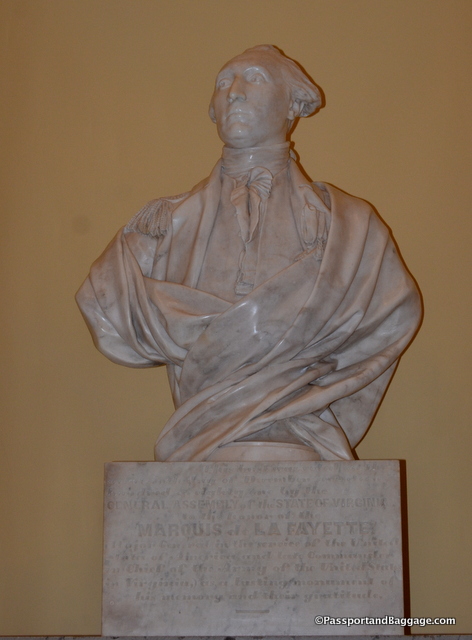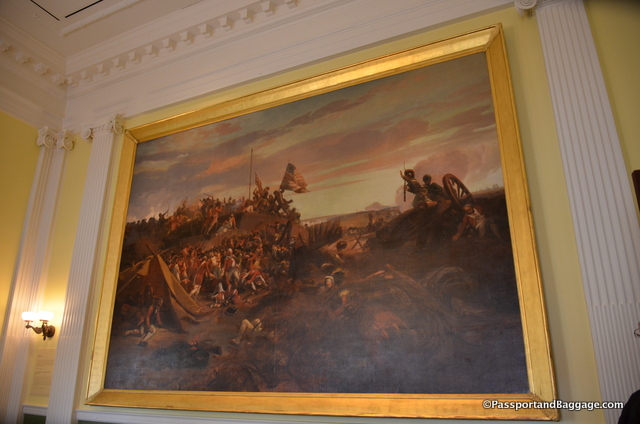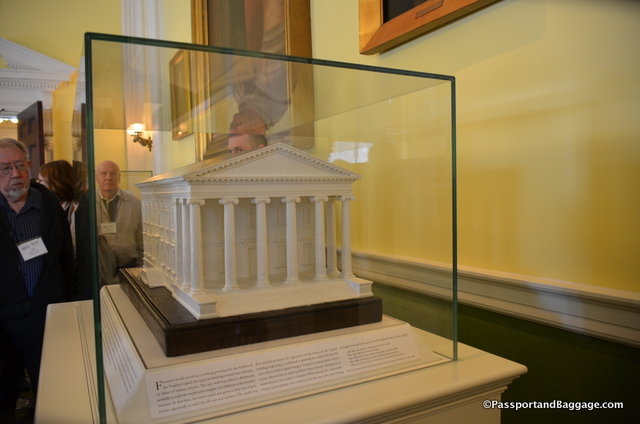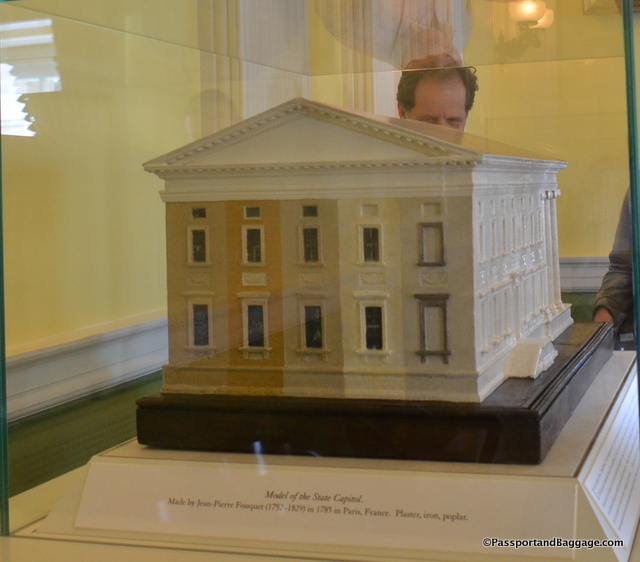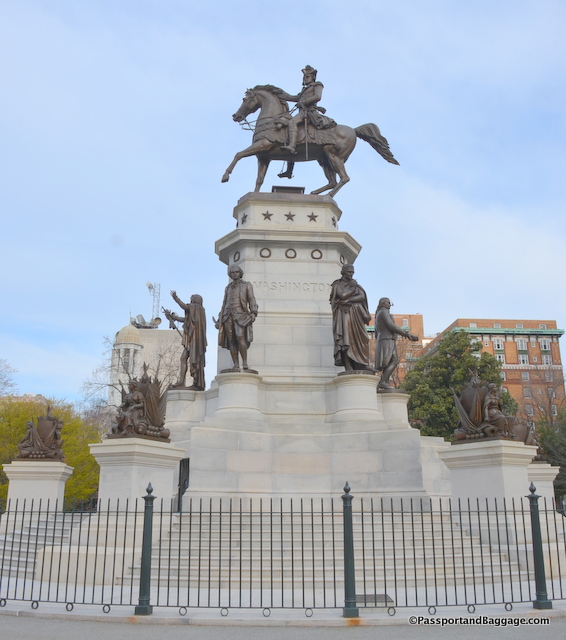Virginia State Capitol
Richmond, VA
March 2017
Virginia’s State Capitol, located in Richmond, is the third capital city of the U.S. state of Virginia and houses the oldest legislative body in the Western Hemisphere.
Thomas Jefferson is credited with the overall design of the new Capitol, together with French architect Charles-Louis Clérisseau. The design was modeled after the Maison Carrée at Nîmes in southern France, an ancient Roman temple.
This is all I will say about the building as it has been written about over the course of hundreds of years by far greater scholars than I, including our esteemed leader and educator Richard Guy Wilson of UVA.
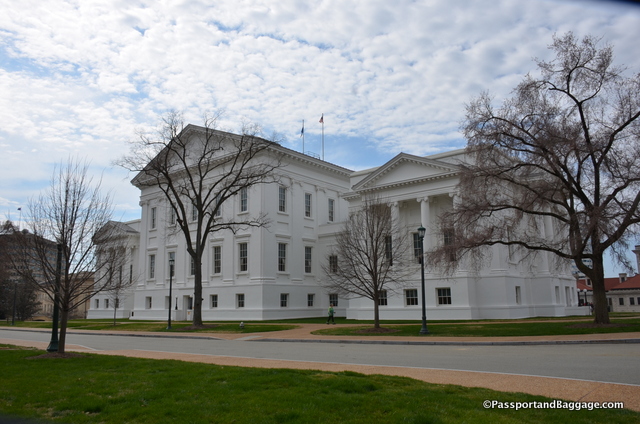
The back side of the capitol. The smaller building on the left is the Senate Chamber and the smaller building on the right is the House of Delegates Chamber, both added in 1906.
The center of the Capitol is the Rotunda. A 30-foot diameter dome caps the Rotunda, added in 1794. There is no mention of the dome in Jefferson’s plans and it is not known if it was a later idea of Jefferson’s or a modification made by the builder. Constructed beneath the pitch of a gable roof, this skylight illuminated dome is invisible from the exterior of the building.
In the center of the Rotunda, commissioned by the Virginia General Assembly in 1784 as a tribute to Virginia’s most respected citizen-soldier, stands this stunning sculpture of George Washington. They wrote to Thomas Jefferson, who was on a diplomatic mission to Paris at the time, asking him to commission Jean-Antoine Houdon for the job. Houdon traveled to Mount Vernon to study Washington, making a plaster mask of his face and taking detailed measurements of his body. He returned to France and carved the sculpture from Carrera marble. It was placed in the Rotunda on May 14th, 1796. There are many illusions to the Roman empire in the work. Washingtons sword is on his side while his left-hand rests on a bundle of rods, called fasces, a Roman symbol of power. He also carries his walking stick and as a possible reference to Roman statesman Lucius Quinctius Cincinnatus, he is placed standing in front of a plow.
Another sculpture by Houdon can be found in a niche surrounding the Rotunda. This is of Marquis de Lafayette, a Frenchman who fought for America during the Revolution. Lafayette was voted a citizen of Virginia by an “act of assembly” in 1785 for his services.
One of the most important paintings in the Capitol can be found in the Old Senate Chamber. The painting is the Storming of a British Redoubt by American Troops at Yorktown. Painted by French artist Eugène-Louis Lami in 1840 it shows exactly what its name implies. The battle took place in October 1781, the same month that Cornwallis surrendered to Washington, and America won its national independence. The painting was a gift to Virginia in 1878 from philanthropist William Corcoran.
Jefferson commissioned Jean-Pierre Fouquet to make a plaster model of the Capitol prior to its restoration. Jefferson described Fouquet as “an artist who had been employed by the ambassador of France to Constantinople, in make models of the most celebrated remains of ancient architecture in the country.”
The model is at a scale of 1:60 and is reinforced with internal iron rods. The plaster model was not originally white. An architectural archeological study of the model was done to determine the original colors, and the various colors found are shown on the back of the model. It is thought it may have been possible that the original capitol was painted to represent masonry.
There is much fine artwork inside and out of the capitol, but the statue of a horse mounted Washington is the last I will discuss in this post.
The Washington Monument which stands prominently outside the capitol was sculpted by Thomas Crawford. Crawford was born in New York City and studied drawing and wood carving before joining a stonecutting studio in New York. He traveled to Rome in 1835 to study with neoclassical sculptor Bertel Thorwaldsen and established a studio there. Crawford is responsible for a good many pieces of sculpture throughout the Virginia State Capitol. However, he is best known for the Statue of Freedom that tops the US Capitol Dome.
The National Park Service states: “Crawford designed three tiers of pedestals with George Washington on top, Virginia patriots in the middle, and a series of allegorical female figures and shields with inscriptions in memory of Revolutionary war principles or events on the bottom. The trophy figures represent the virtues of the revolutionary era and battles and places representing those virtues. The second tier consists of standing figures of Virginia’s leaders during the Revolution: Thomas Jefferson, George Mason, John Marshall, Andrew Lewis, Thomas Nelson, and Patrick Henry. Atop the pedestal is the equestrian statue of Washington. Crawford only finished the sculptures of Washington, Jefferson, and Henry before his death. Crawford’s protégé, another important sculptor Randolph Rogers, completed the remaining pedestal sculptures after the Civil War. ”
The Capitol building is open for Guided Tours 9:00 a.m. to 4:00 p.m. Monday through Saturday, with the last tour commencing at 4:00 p.m. On Sunday, guided tours are available from 1:00 p.m. to 4:00 p.m., with the last tour commencing at 4:00 p.m. Tours last approximately one hour and are free.
